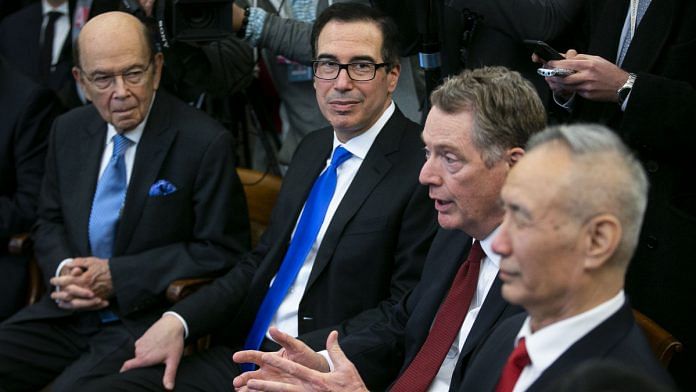US Treasury Secretary Steve Mnuchin Friday said US and China were in the process of striking a currency deal as part of the trade negotiations in Washington. Though Mnuchin didn’t provide any specifics, reports suggest that the US wants China to stop depreciating yuan and stabilise its movement against the US dollar.
The problem with such a deal is two-fold.
First, to allow the yuan to appreciate runs against some of the past lessons China has learnt from the Japanese case in 1980s.
Second, the currency management system in China is extremely complex. And over the years, their methods of intervention have become more and more subtle. In such a scenario, it might be difficult for the US authorities to monitor enforcement.
The Japanese Lesson
Several analysts seem to be arguing that the new currency pact between China and the US might look like ‘Plaza Accord 2.0’. The reference is to 1985’s Plaza Accord under which Japan and Germany had to appreciate their currency with respect to the US dollar.
By the end of 1987, the yen had doubled in value against the US dollar. This dramatic rise in yen’s value was seen as the major factor, which led to Japan’s falling exports and a stagnant economy. The Chinese argue it was due to the Plaza Accord that Japan still has a stagnant economy, even three decades after.
As pointed out by Tom Holland here, the Chinese authorities seem to have taken the wrong lessons from the Japanese case. He argues that the problem was not the rise in yen, but the reaction of the government and the central bank to the rising currency.
In response to a rising yen, the Bank of Japan (BoJ) dramatically cut interest rates from about 5 per cent to 2.5 per cent over a very short period. Additionally, this was accompanied by massive tax cuts. Both these moves were aimed at easing the pressure from exporters, given the steep rise in currency value.
But the combined effect of rate and tax cuts ensured a massive domestic lending explosion, eventually forming a financial bubble. When it burst, it led the Japanese economy into a deflationary liquidity trap.
Given the Japanese saga, the Chinese authorities might want to remember that letting yuan appreciate might not be as harmful as resisting that change.
Currency management in China
Through 2018, trade tensions between the US and China rose, leading to the tariffs going up. With rising tariffs, China’s currency depreciated by 5 per cent though the year. It has rebounded 3 per cent so far this year.
Most traders and governments saw the depreciation as a response to rising tariffs. It was believed that the Chinese central bank, People’s Bank of China (PBoC), and the government ensured its exporters were being aided through cheap exchange rates.
Now even if China starts to practise a floating exchange rate mechanism — allowing yuan to move according to market dynamics — the question is, how do US authorities monitor it?
In a comprehensive article, Bloomberg lists out the various ways used by PBoC to manage China’s yuan.
It notes that China’s currency intervention instruments include liquidity squeeze, daily fixing, specific PBoC regulations, PBoC signalling, capital controls, and use of massive chest of foreign exchange reserves.
Such a complex set of available instruments has ensured that yuan is one of the most stable currencies in the world.
Given that the Chinese authorities have such a large set of options to choose from, the enforcement and monitoring process might not be as simple.
Further readings
U.S. China are haggling over how to enforce currency pact, Bloomberg
All the ways China influences Yuan, and how to monitor them, Bloomberg
As US mulls new Plaza Accord, China should learn from Japan’s fate … but not the lesson it think, South China Morning Post



